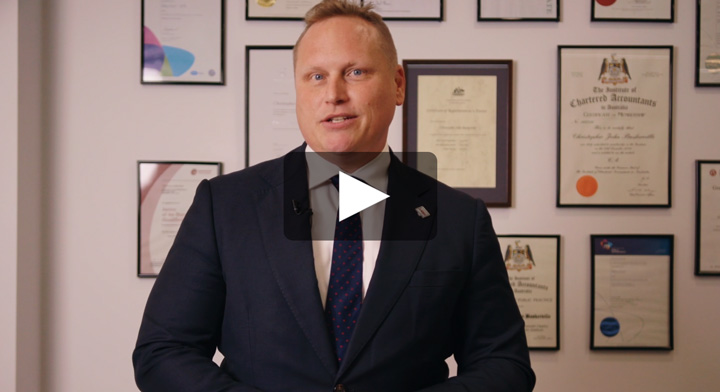Spotlight on Small Business Restructuring

Small Business Restructuring Process (SBRP)
As Small Business Restructuring professionals, our Registered Liquidators ensure you benefit from the insolvency reforms.
Jirsch Sutherland’s Registered Liquidators have vast experience in restructuring small businesses and are legally able to act as Small Business Restructuring Practitioners (SBRPs) for viable but financially distressed companies with total debts not exceeding $1 million, as per the Corporate Insolvency Reforms that came into effect on January 1, 2021.
With a Jirsch Sutherland SBR, you can benefit from the reforms, which are designed to help COVID-19 impacted companies recover, by offering simpler, faster and lower cost debt restructuring. SBR is a simpler and more cost effective solution than voluntary administration or liquidation.
SBR: A Lifeline for Small Businesses
- Reduce business debt owed to creditors
- Negotiate favourable debt repayment terms
- Cheaper alternative to Voluntary Administration
- Simpler & faster than traditional options
- Company is protected from legal action
- Help avoid liquidation
- Help improve business cash flow
- Help your employees retain their jobs
- Retain control of ordinary business operations
Eligibility for Small Business Restructuring
- Viable but financially distressed companies with total debts not exceeding $1 million
- Be insolvent or likely to become insolvent
- Employee entitlements are up to date
- Tax Office lodgements are up to date. Note you can still have money outstanding
- The company must not have previously used the small business restructuring process or the simplified liquidation process within the past 7 years
Our Small Business Restructuring Practitioners will guide you at every step
Have peace of mind knowing you and your company will stay compliant during this process as, with any legislation, the insolvency reforms come with a myriad of complex requirements and regulations, particularly eligibility criteria.
Acting as your SBRP, a Jirsch Sutherland SBRP will liaise with your creditors, conduct an investigation of your company’s financial situation, and prepare and present a restructuring plan to your creditors within the tight 20-day timeframe.
While this takes place, you are able to stay in control of your company and continue to trade, giving it a better chance of recovery. If the plan is accepted by at least 50 per cent of your creditors by value, your SBRP also actions it.
Is your company insolvent or likely to become insolvent soon?
Early action ensures a better outcome

Small Business Restructuring Process (SBRP)
As Small Business Restructuring professionals, our Registered Liquidators ensure you benefit from the insolvency reforms.
Jirsch Sutherland’s Registered Liquidators have vast experience in restructuring small businesses and are legally able to act as Small Business Restructuring Practitioners (SBRPs) for viable but financially distressed companies with total debts not exceeding $1 million, as per the Corporate Insolvency Reforms that came into effect on January 1, 2021.
With a Jirsch Sutherland SBR, you can benefit from the reforms, which are designed to help COVID-19 impacted companies recover, by offering simpler, faster and lower cost debt restructuring. SBR is a simpler and more cost effective solution than voluntary administration or liquidation.
SBR: A Lifeline for Small Businesses
- Reduce business debt owed to creditors
- Negotiate favourable debt repayment terms
- Cheaper alternative to Voluntary Administration
- Simpler & faster than traditional options
- Company is protected from legal action
- Help avoid liquidation
- Help improve business cash flow
- Help your employees retain their jobs
- Retain control of ordinary business operations
Eligibility for Small Business Restructuring
- Viable but financially distressed companies with total debts not exceeding $1 million
- Be insolvent or likely to become insolvent
- Employee entitlements are up to date
- Tax Office lodgements are up to date. Note you can still have money outstanding
- The company must not have previously used the small business restructuring process or the simplified liquidation process within the past 7 years
Spotlight on Small Business Restructuring

Our Small Business Restructuring Practitioners will guide you at every step
Have peace of mind knowing you and your company will stay compliant during this process as, with any legislation, the insolvency reforms come with a myriad of complex requirements and regulations, particularly eligibility criteria.
Acting as your SBRP, a Jirsch Sutherland SBRP will liaise with your creditors, conduct an investigation of your company’s financial situation, and prepare and present a restructuring plan to your creditors within the tight 20-day timeframe.
While this takes place, you are able to stay in control of your company and continue to trade, giving it a better chance of recovery. If the plan is accepted by at least 50 per cent of your creditors by value, your SBRP also actions it.
Is your company insolvent or likely to become insolvent soon?
Early action ensures a better outcome

General overview of the Small Business Restructuring process
1
Eligibility assessment
During pre-appointment, directors must conclude that the company is insolvent or likely to become insolvent. A Restructuring Practitioner is appointed.
2
Proposal of SBR plan
Restructuring Practitioner (RP) assists in developing the Small Business Restructuring Plan (SBRP) within 20 business days.
Proposal is circulated to creditors.
3
SBR plan implementation
Creditors have 15 business days to make a decision and vote. More than 50% in value is required for approval.
Approval allows company to continue trading.
Restructuring Practitioner administers the plan.
4
Creditor accepts plan. SBR process terminates
Once creditors approve the plan, the small business restructuring process concludes.
The company is released from admissible debts.
Corporate solutions for businesses experiencing financial distress
Corporate Insolvency
A company that cannot pay its debts when they are due is considered to be insolvent. There are several warning signs that a company may become insolvent…
Read moreReceivership
If a company is in financial difficulty, a receiver may be appointed to take control of some or all of its assets to ensure the payment of secured creditors…
Read moreLiquidations
When the assets of a business are liquidated, it means they are converted into cash. This situation spells the end for the business, as with stock, equipment…
Read moreDeed of Company Arrangement (DOCA)
A DOCA can help a company avoid liquidation and remain in business allowing it to continue with all or some of its usual business operations…
Read moreSmall Business Restructuring
As Small Business Restructuring Practitioners, our Registered Liquidators ensure you benefit from the insolvency reforms. Jirsch Sutherland’s Registered Liquidators have vast experience in restructuring small businesses…
Read moreVoluntary Administration (VA) Experts
Voluntary Administrations (VAs) allow insolvent companies to continue to operate, or, if this is not possible, they provide for a greater return to creditors than they would otherwise receive if the business was liquidated…
Read more








